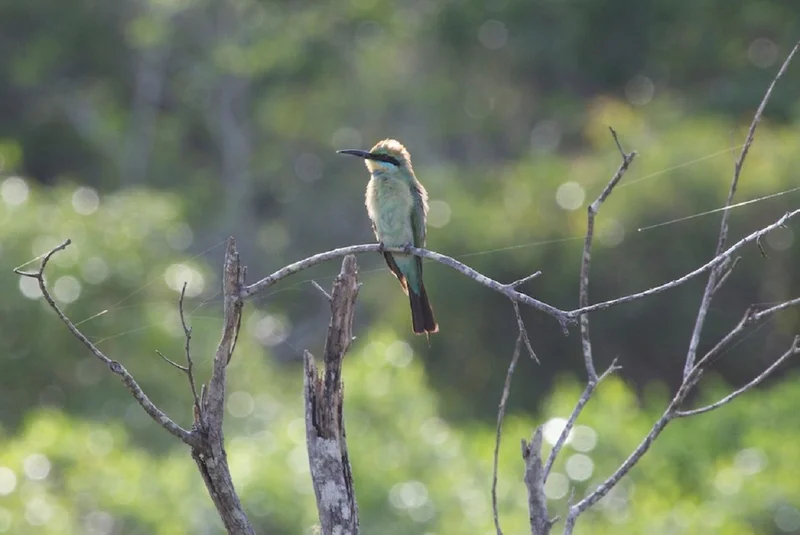BIRD WATCHING: Spotlight on Rainbow bee-eaters

Rainbow bee-eaters are widespread across the Australian mainland, with the exception of the driest desert regions.
It is frequently found near water, although it rarely needs to drink due to the high moisture content of its insect prey.
Proximity to water is likely beneficial for the additional insect prey it offers, including dragonflies and damselflies, which are frequently snatched on the wing.
While it can be resident in the north of Australia it most commonly arrives on the Sunshine Coast around early to mid-September and stays for the breeding season.
The rainbow bee-eater is the only member of the Meropidae family to be found in Australia.
Wasps, hornets and bees make up around 80% of the rainbow bee-eater’s diet. Amazingly, this beautiful bird with an average weight of only 27 grams can eat several hundred insects in a day
A study published in 2004 investigated the impact of cane toads Rhinella marina on nesting rainbow bee-eaters Merops ornatus in the Cooloola National Park.
Inside the park, the bee-eaters excavate their nesting tunnels in the sand, which can be over a metre long. An enlarged chamber at the end of the tunnel provides the perfect safe location to incubate eggs and raise young chicks. In recent decades, however, the nesting chamber has become considerably less safe due to the activities of the introduced predatory toad.
In the presence of cane toads, rainbow bee-eaters produced an average of 0.8 fledglings per nest compared to 1.2 fledglings in cane toad free areas.
During daylight hours, the bee-eater can deter many potential predators through mobbing behaviour. However, as a diurnal species, the bee-eater’s usual defence against the nocturnal cane toad is completely inadequate.
For a usurping cane toad, the rewards to be found in a bee-eater nesting burrow are considerable as both a shelter and a source of food. In fact, so attractive to cane toads are the nesting tunnels, that toads displaced over a kilometre have successfully made their way back to the tunnel.
Prior to the arrival of cane toads, the bee-eaters faced another formidable foe. In 1922 the Flying-fox and Bird Pest Destruction Board recommended that the rainbow bee-eater be removed from the list of protected birds, mainly at the urging of the Beekeepers Association. But the Central Queensland Native Birds Protection Association was having none of it. They argued that there was much more to be learned about the bee-eater’s dietary habits.
A spokesperson for the Association stated that “only when there is a consensus of opinion that the bird is a pest…will it be time for the authorities to strike a fell blow of annihilation at it”
Fortunately, no fell blow of annihilation was landed, and this beautiful bird continues to be part of Australia’s spectacular biodiversity.
Story and photo by Dr Julie O'Connor, Senior Conservation Partnerships Officer, Sunshine Coast Council.
References
- Boland, C.R.J., 2004. Introduced cane toads Bufo marinus are active nest predators and competitors of rainbow bee-eaters Merops ornatus: observational and experimental evidence. Biological conservation, 120(1), pp.53-62. - Morning Bulletin, Wed 23 Aug 1922, Rockhampton
- Rainbow bee-eaters YouTube video by Faye Arcaro, https://www.youtube.com/watch?v=j3Hv7fyerxk